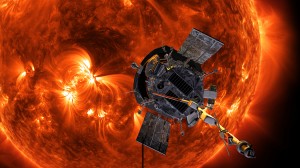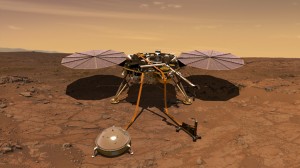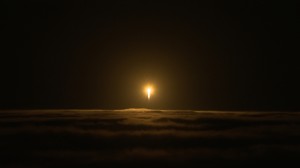Red Planet Day
Tuesday, November 28th, 2023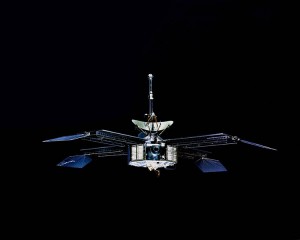
The Mariner 4 probe was launched in 1964 and traveled toward Mars. It was the first satellite to take up close pictures of another planet.
Credit: NASA
On Earth, the blue and green planet of our solar system, we are celebrating Red Planet Day today, November 28. The red planet is a nickname for Mars, the fourth planet from the sun. On November 28, 1964, NASA launched the first mission toward Mars, with the Mariner 4 probe. We call it “the Red Planet” because the surface of Mars has a reddish color due to the weathered iron-rich minerals present in the Martian dust and surface rocks. The iron oxidizes creating rust. We should call it the rusty planet! Many ancient peoples associated the planet with war and conflict because of its blood-red appearance. Indeed, Mars is the Latin name for the ancient Roman god of war.
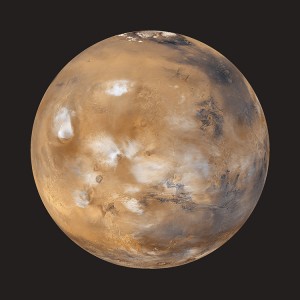
Mars, like Earth, has clouds in its atmosphere and deposits of ice at its poles. But unlike Earth, Mars has little to no liquid water on its surface. The rustlike color of Mars comes from the large amount of iron in the planet’s soil.
Credit: NASA/JPL/Malin Space Science Systems
Humans have been studying Mars for centuries. Visible from Earth with the unaided eye, Mars has always captivated us! Of all the planets in our solar system, Mars has the surface environment that most closely resembles that of Earth. Mars has weather and seasons and landforms that appear familiar. Salty water may flow just below the planet’s surface. Like Earth, the sun, and the rest of the solar system, Mars is about 4.6 billion years old.
Mars has a special place in popular culture, one that is unique among the planets. This fascination with Mars probably developed because the planet is relatively close to and similar to Earth. Early observations with Earth-based telescopes inspired popular speculation that Mars was home to all kinds of life, even alien civilizations. Many works of science fiction have played upon these ideas, showing humans visiting Mars or malevolent Martians invading Earth.
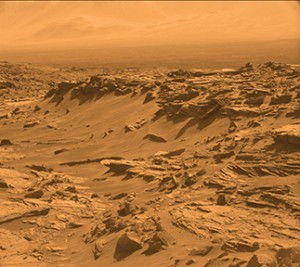
A Martian landscape includes jagged rocks, sand dunes, and hazy clouds. The image, taken by the United States rover Curiosity, has been adjusted to show the natural color of the planet, as it would appear to an observer on the surface.
Credit: NASA/JPL-Caltech/MSSS
In the 1960’s, the U.S. Mariner spacecraft showed Mars to be a cold, desert planet devoid of visible life. But Mars continues to fascinate people with hints of past surface water and the possibility that microscopic life once existed or still exists there. Experts also view Mars as the next likely target for human space exploration and perhaps even as a stepping stone to exploring the rest of the solar system.
Robotic spacecraft began detailed observation of Mars in the 1960′s. The United States launched to Mars the Mariner 4 probe in 1964 and Mariners 6 and 7 in 1969. The pictures they returned showed a barren surface, covered with craters like those on the moon. There was no sign of liquid water or life. The spacecraft observed few of the planet’s most interesting features because they happened to fly by only heavily cratered regions. But when Mariner 9 went into orbit around Mars in 1971, people’s view of Mars completely changed. Mariner 9 mapped about 80 percent of Mars and made the first discoveries of the planet’s canyons and volcanoes. It also found the first evidence for water, taking photographs of the outflow channels and valley networks.

